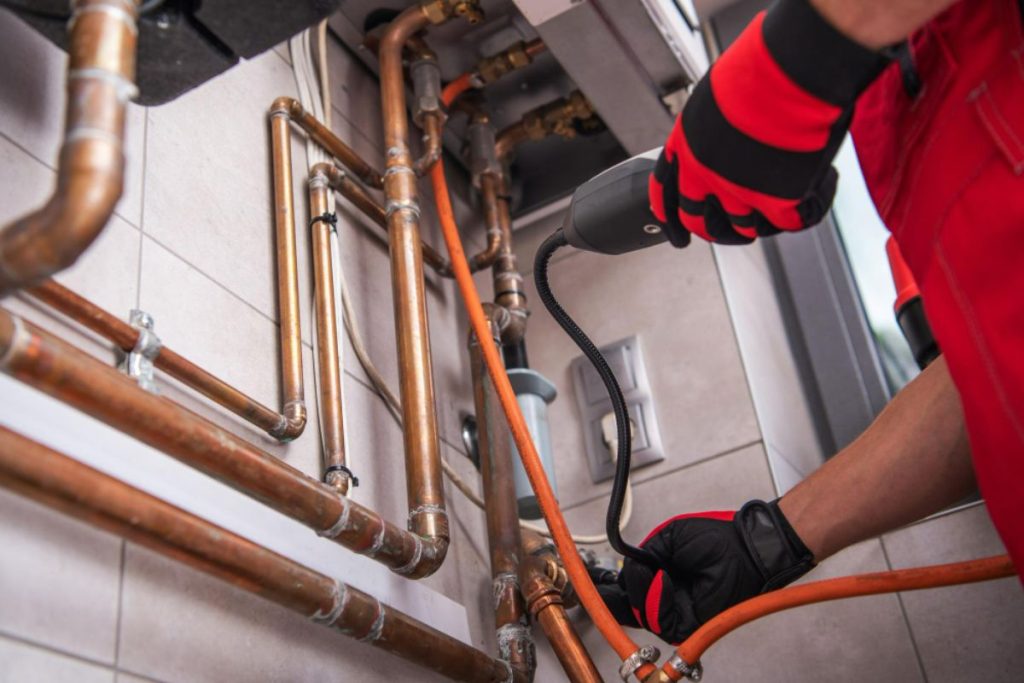What are the types of plumbing systems?
- Potable plumbing system
- Sanitary plumbing system
- Stormwater plumbing system
Overview
- A potable plumbing system is designed not to contact sanitary and stormwater plumbing systems.
- Sanitary plumbing systems carry waste safely from properties to sewage treatment plants.
- A stormwater plumbing system is more effective when the right drainage type is installed.
Plumbing is a system of pipes that improves the quality of life in residential, commercial, and industrial buildings. It is a necessary part of any building project since it manages fluids, which are important to support health and hygiene. It also influences how much water we use, leading to better water conservation.
This article focuses on the three types of plumbing systems, from supplying drinking water to managing rainwater. Read on to learn more!
Potable Plumbing System
A potable plumbing system is used to bring in drinking water. It helps avoid contamination, ensuring hygienic water for people to consume. It is typically made of galvanized iron or steel. These materials are affordable and durable. They are highly resistant to corrosion. Besides this,
To know if your drinking water supply is in good condition, you can check through these easy ways:
- Check for discoloration, particles, and other impurities.
- Smell and taste your drinking water for odd fragrances like chlorine. A metallic or bitter taste may mean contamination of minerals or pollutants.
- Check the texture. Hard water means there’s a high mineral content in your supply. White residue can appear on your surfaces and faucets.
- Use home water testing kits. They help analyze contaminants in your drinking water. These can include bacteria, lead, and pesticide contaminants.
- pH testing is available in stores and online. If the results are between 6.5 to 8.5, your drinking water is safe to consume. Any lower or higher than these results is not ideal.
Sanitary Plumbing System
The sanitary plumbing system is used to transport waste from the building to the community sewage without any spills or leaks. It is installed to specially remove human waste and wastewater. It is connected to toilets, sinks, washing machines, and more.
Any discharge from the pipes can be harmful to the community. For instance, leptospirosis is a common bacterial disease when an individual is exposed to contaminated water or soil. It can initiate with flu-like symptoms.
This system also leads to sewage treatment plants. These sites collect, treat, and discharge the waste while ensuring the safety of the environment and the general public.
There are the main systems you can install to aid your sanitary plumbing. They are one-pipe, two-pipe, single-stack, and partially ventilated single-stack systems.
- One-pipe system vertically connects toilets, sinks, and more directly to the drainage system.
- Two-pipe systems are another vertical system. Toilets and urinals are connected to a different pipe while baths, kitchen sinks, and others are connected to another pipe.
- Single-stack systems essentially mean all furniture and appliances are connected into one pipe. There is no pipe for ventilation, making this system inexpensive.
- Partially ventilated single-stack systems are an upgraded version of the single-stack type. There is an improved ventilation system through a relief vent pipe.
Stormwater Plumbing System
Stormwater is the precipitation resulting from weather conditions. These are heavy rains, typhoons, and even snow melting. It is often found in gutters on your rooftops and driveways.
Managing this water is essential to reduce issues like stormwater pollution. This pollution can prevent aquatic animals and plants from thriving. If they run off freely, they can carry bacteria and other pathogens like pet waste, motor oil, fertilizers, and the like.
A stormwater plumbing system is installed to remove rainwater from commercial, residential, and industrial properties safely. Apart from this, it also ensures that issues like flooding can be prevented during storms.
Drainage systems are the key to managing stormwater. The following are a few effective drainage types:
- Slot drains is a long, thin drainage. They are ideal for light rains or precipitation. They are also designed to be walked or driven on without a hassle.
- Open storm drains are usually seen in provinces. They are located between the side of the road and the property. They have uncovered drains that can easily be maintained and are cheap to install.
- Closed storm drains feature a grate-like cover. It is used to block leaves or other objects that can clog the system. They are safer than open storm drains but are costlier to install and maintain.
Key Takeaway
The three types of plumbing systems all serve different purposes. Understanding their designs can help you choose the right materials. When choosing the best pipes for any plumbing system, you must reach out to your trusted steel pipe supplier.
At Supreme Pipe, we ensure the quality of our products. Enhancing your plumbing systems and other pipe-related construction is our priority. With over a decade of experience, we make sure we satisfy your steel pipe needs with our product catalog. Contact us and build reliable plumbing systems today!
